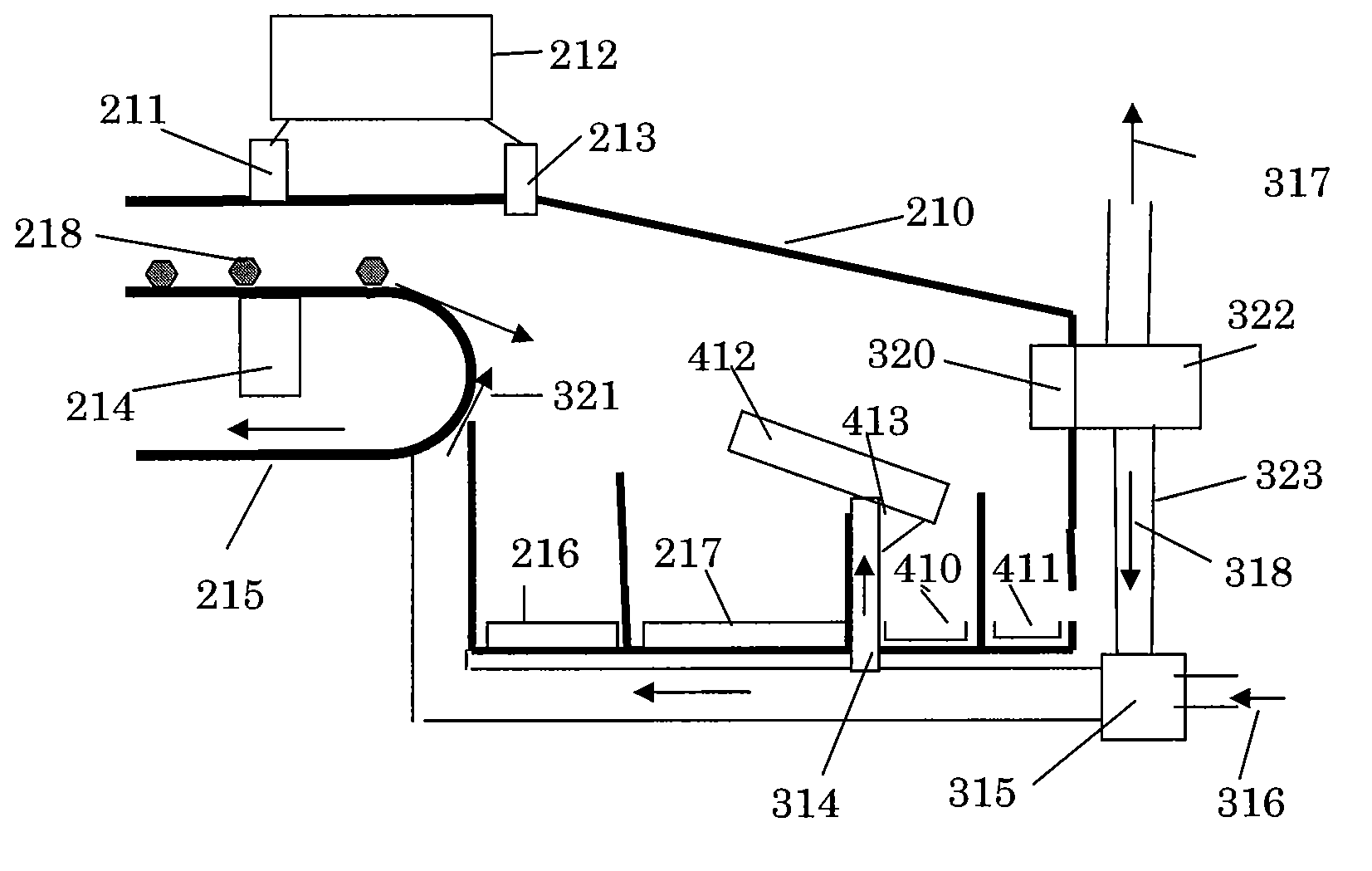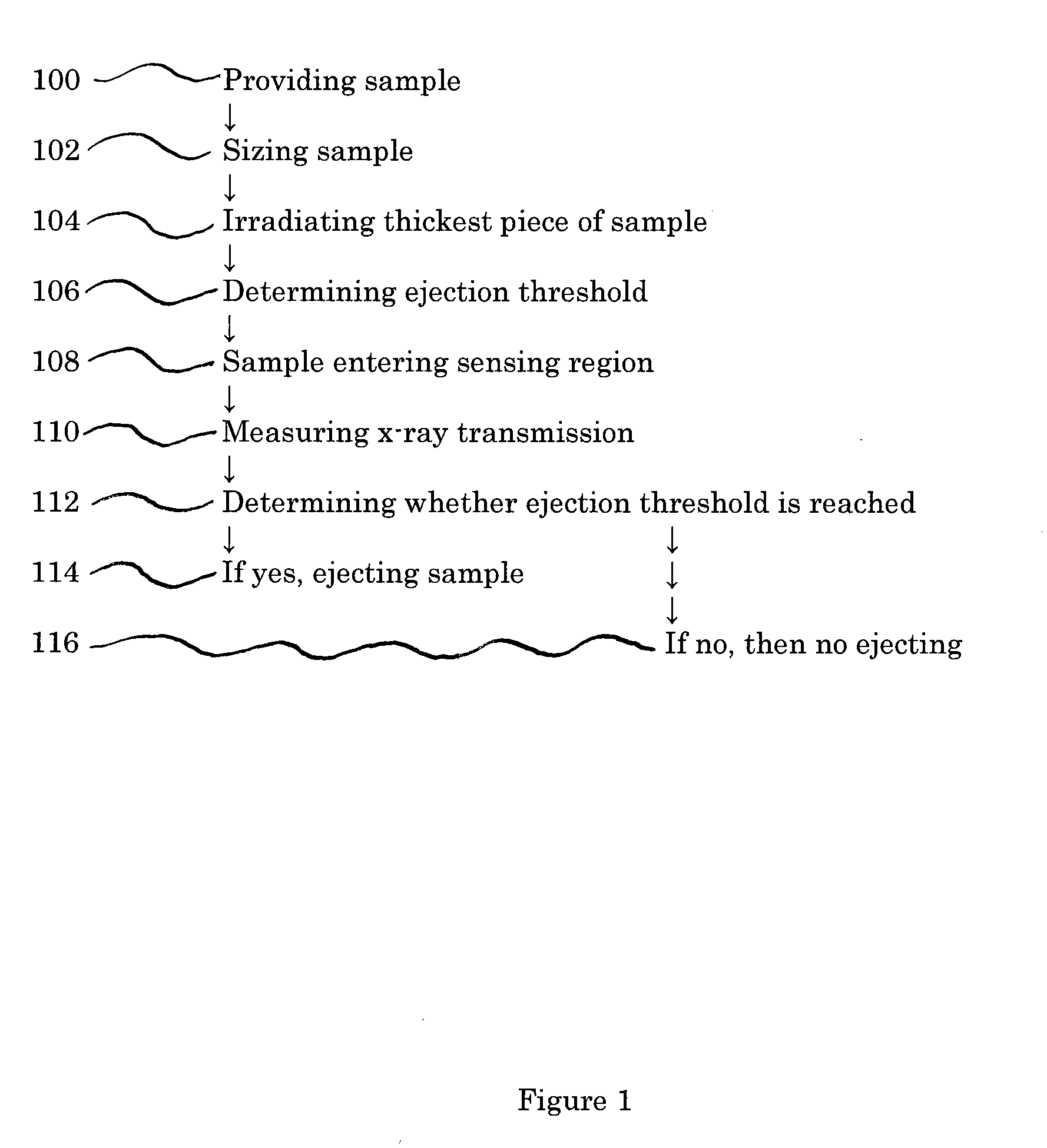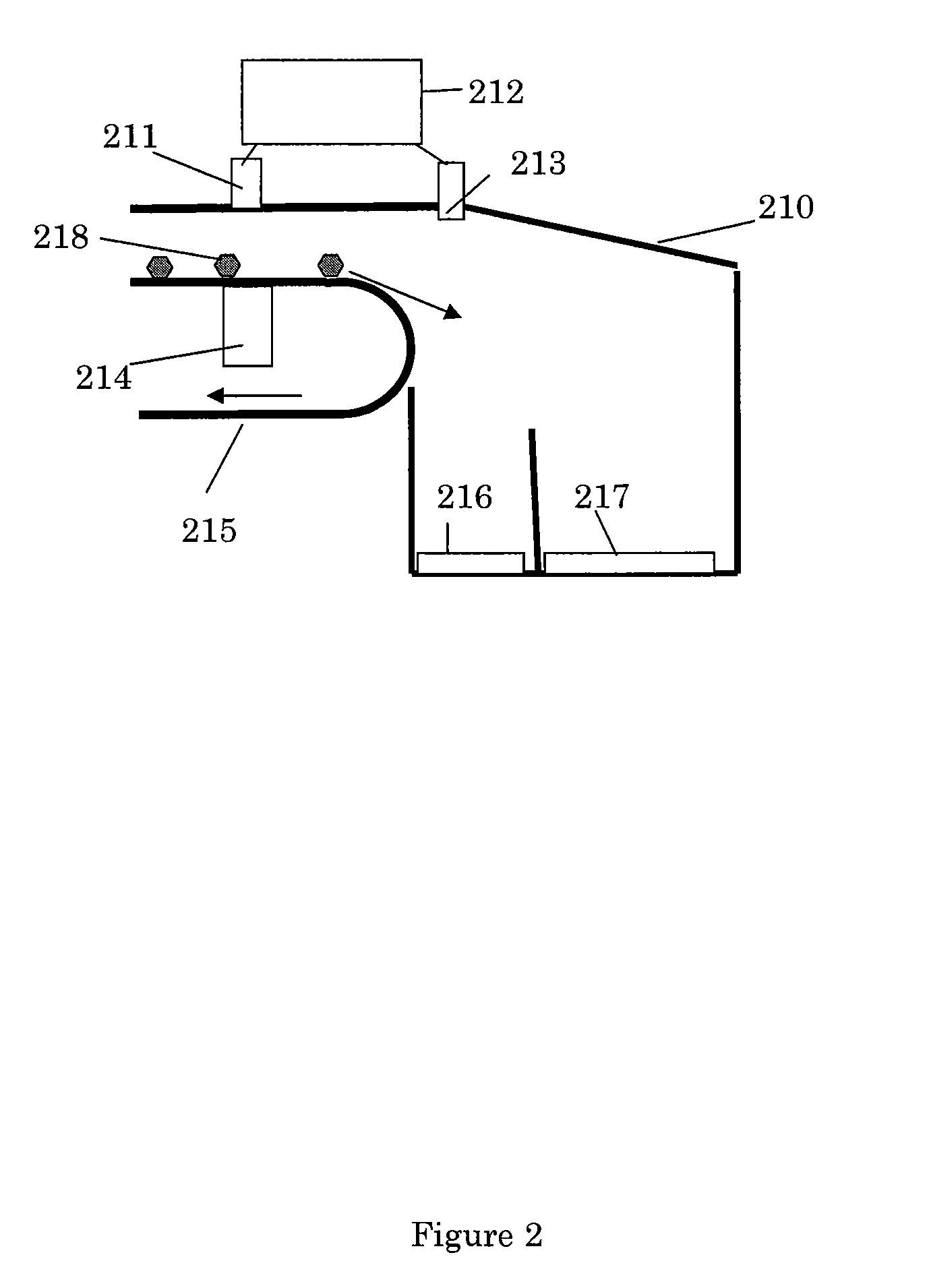Methods for sorting materials
a technology of materials and materials, applied in the field of methods for sorting materials, can solve the problems of reducing the ash and sulfur content of coal, increasing the cost of cleanup and ash spill cleanup, and increasing so as to reduce the risk of fire and explosions, and reducing the sulfur
- Summary
- Abstract
- Description
- Claims
- Application Information
AI Technical Summary
Benefits of technology
Problems solved by technology
Method used
Image
Examples
example 1
Linear Absorption Coefficient
[0044]Shown in FIG. 7 are the linear absorption coefficients from the National Institute of Standards and Technology (NIST) mass absorption coefficients (μ) for iron pyrite (FeS), coal, and silicon dioxide (SiO2) over a range of x-ray energies. Also shown are their densities. Note that coal is a mixture of carbon and hydrocarbons and there is no NIST “standard” for coal. Accordingly, the x-ray absorption coefficients of coal are the NIST data for graphite corrected for coal density of 1.2 grams per cubic centimeter (g / cc). As shown elsewhere herein, the absorption by coal is much less than the absorption of pyrite in silicates for 8 to 20 kilo electron volts (KeV) x-rays. Using the information in FIG. 7 illustrates how a contaminant can be differentiated from coal.
example 2
X-ray Transmission Percentages at Various Energies
[0045]The methods disclosed herein use x-ray energies that permit selection of contaminants for ejection while providing detectable transmission through coal. As a first step, run-of-mine coal is reduced to sizes of less than five centimeters in order to provide significant transmission through the coal samples while the opaque contaminants, such as sulfide and silicates, are detected by the reduced percentage of transmission of the x-rays through those materials. Shown in FIG. 8 are percent transmissions calculated from NIST absorption coefficient information.
[0046]As best seen in FIG. 8, coal allows for transmission of x-ray energies very readily as compared to the transmissions allowed by the other materials. For example, it is calculated that use of x-ray energy at a level of 15 KeV results in a 56.6% transmission through coal having a thickness of 1 cm, while contaminants having a thickness of only 1 mm have reduced transmission...
example 3
Separation of Contaminants from Coal
[0047]A 100 pound sample of wet washed coal was subjected to the following method in order to separate contaminants from the coal. The sample was sundried in order to remove moisture remaining from the wet washing procedure. After sundrying, the sample was reduced to individual pieces having size less than 10 cm. One of the pieces of the sample was placed on a x-ray scanning device, a baggage scanner, commercially available from Smiths Detection of Danbury, Conn., as model no. 7555. The x-ray device was adjusted to detect x-ray energies up to 160 KeV. The transmission through an individual piece of the sample was determined at two energy ranges. The x-ray detectors, which receive the x-ray energy transmission, were set so that the transmission through the coal resulted in correlation of transmission at the two energy ranges giving an approximate atomic number of less than 10. As noted in this application, since contaminants within the coal have hi...
PUM
 Login to View More
Login to View More Abstract
Description
Claims
Application Information
 Login to View More
Login to View More - R&D
- Intellectual Property
- Life Sciences
- Materials
- Tech Scout
- Unparalleled Data Quality
- Higher Quality Content
- 60% Fewer Hallucinations
Browse by: Latest US Patents, China's latest patents, Technical Efficacy Thesaurus, Application Domain, Technology Topic, Popular Technical Reports.
© 2025 PatSnap. All rights reserved.Legal|Privacy policy|Modern Slavery Act Transparency Statement|Sitemap|About US| Contact US: help@patsnap.com



